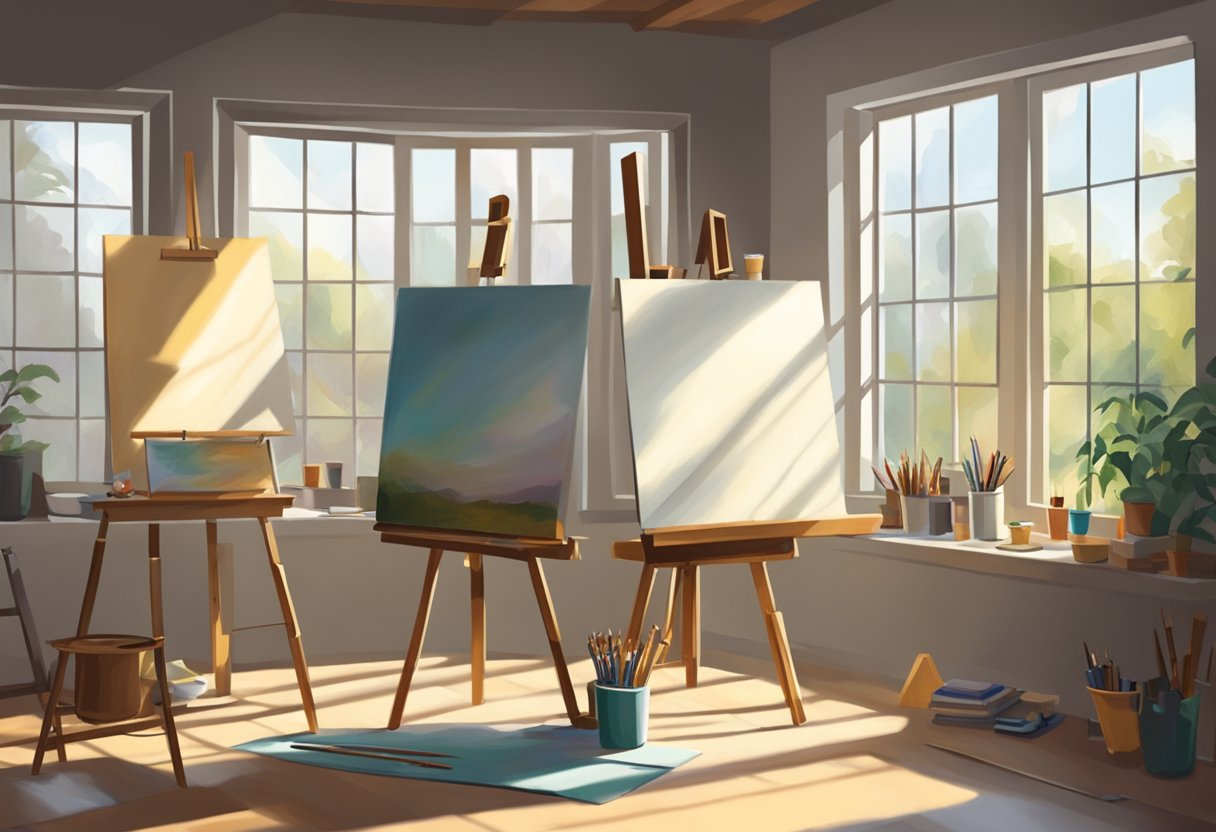
Of all of the various approaches you could opt to travel, my favorite by far is that a road trip. Road trips provide you the freedom that’s quite tricky to have from different kinds of travel.
You are able to select where you want if you desire. You’re able to change your programs last minute. And you may also drive with no destination in mind should you prefer.
Road excursions are particularly great if you are a photographer. But road excursion photography includes its very own distinctive set of challenges. Just like with any kind of travel photography, street trips require a good deal of prep.
I learned this the hard way and have missed lots of chances because of insufficient preparation.
Today I aim my street trips in much more detail than I ever was able to. I love to split up the preparation into two segments: the road excursion as well as the photography.
Obviously, there is some overlap, however, it will help me ensure I have not forgotten anything doing this like this.
The Road Trip
The very first section of this preparation is about the automobile, lodging, and path.
This entails choosing a car in case you don’t have one, determining how and where you’d love to maneuver, and deciding about the street excursion path.
These items are personal taste and will also be based on whom you are traveling with.
Wheels
There are a couple of factors regarding your car or truck. Will your automobile be your lodging? If this is that’s the case, you may employ an RV or camper van. You can use a normal van and sleep at the trunk, even though that may take a little bit of work.
Camping may be your style. I have taken road trips with roof-top tents and routine seats and had a blast.
Hanging from your automobile has the extra benefit of having the ability to stay nearer to possible picture places. Most paid lodging such as hotels is going to be near or in more populated regions like cities and popular tourist destinations.
If that is what you need, good, but my concept of a road trip entails getting away from active locations.
That is a large appeal to living from a car or truck. Getting nearer to nature. The only time you are not out in character is if you are behind the wheel.
When picking your car or truck, it is important to also think about if it’s going to be up to this job. Otherwise, you might end up getting help from roadside assistance such as Towing San Jose.
- Can it be secure and mechanically sound?
- Might it be suitable for the type of terrain you’re going to be driving?
- Is it large enough for you personally, your traveling buddies, along with your equipment?
- Can it be comfortable to push for long periods of time?
- What is it like about gasoline? How much does it cost to drive and preserve?
All these are significant questions to ask prior to deciding on a car, not only for the sake of your pocket but also for your security.
Course
If you are arranging a road trip, you probably already have at least a rough idea of where you are going. Perhaps you’ve got the last destination in your mind and what in-between is still a puzzle.
It might be a one-way street excursion, a return trip, or even a loop. Perhaps you currently have the whole course intended in minute detail. In any event, here is what has helped me.
In case you are arranging a photography-specific road excursion, plan your path across the places that you would like to picture.
This might seem obvious, but it is surprising just how many people waste so much time seeing areas which they did not especially need to picture they overlooked the areas they did.
I have been guilty of the. I do crazy amounts of study to the areas I wish to grow my own portfolio I barely have enough time to find anything else.
Spend some substantial time exploring photo places and save to a gallery or folder somewhere. I utilize a blend of programs and sites to explore and program my street trip photography.
Pinterest is very good for exploring locations in addition to road excursion paths. 500px and Flickr can also be helpful since you are able to discover fantastic pictures of places you need to picture and save them into a gallery to refer back to afterward.
The instrument I have found most suitable for organizing my road excursion paths and photograph places is My Maps. It is a Google service that uses its amazingly comprehensive Maps info and lets you program and plots everything and anything.
I use it to plot my path, wineries, points of interest, picture places, cafes, lifts, etc.. It attracts any information that is offered in Google Maps, and also you may add almost anything which is not available today.
You might even upgrade and add to it as you move thanks to its capability to sync with all the cellular programs.
Should You Will Need Access to Electricity
When there’s 1 thing photographers can not live with no street, it is electricity. Everything from cameras and laptops to telephones and also drones want electricity and a lot of it.
Thankfully, in case you’ve got a car, then you have a supply of power wherever you move, but it might be inadequate. I have frequently survived street trips using a few 12v sockets to control my USB-powered apparatus and cans, but sometimes that is not enough.
If you are staying in places with a trusted supply of electricity and you’ll be able to control everything every night, the sockets in your car or truck might be everything you want.
If you are living or camping from a camper van you will want to think of a trusted strategy, however. Nothing will destroy your street trip quicker than batteries that are dead.
I love to utilize a dual battery system. This indicates that you have a battery to operate the automobile and you for charging apparatus. Solar is also a wonderful alternative and becoming less expensive. Even a 12v inverter will let you plug normal appliances such as notebooks in and control your car battery life.
If you are traveling at a kayak or even a car specifically set up for road trips, it might already be well ready for charging apparatus.
Whatever method you choose, check its functions until you reach the street. Also, be certain to have sufficient sockets to control everything. Needing to determine which device requires charging more desperately is unbelievably frustrating. Always take a power bank too.
The Way To Stay Connected
You might be one of those men and women who can travel without being on the world wide web, but I am not. Not all the time. When I am on a protracted road trip I want to net.
However well I have proposed it, there are always things I want to study or look up.
When it’s checking the weather prediction or moon stages, or locating the closest gas station or even the most effective local java, there are a number of things that are much easier with the net.
If you are staying in paid lodging, it is very likely that there’ll be WiFi accessible. Otherwise free, it could almost always be bought nowadays. Though restricted, it will generally be good for your needs while traveling the street.
The very ideal alternative if you’re living from your automobile is a neighborhood sim card with the information contained. It is rarely excellent value for money, but it is going to provide you with a bit of communication with the external world and permit you to obtain exactly what you want.
In a pinch, lots of cafes and fast food outlets provide free WiFi, so watch out if you are driving to more populated locations.
ALSO READ: Simplifying Your Hunt for Places to Take Photos
The Photos
If you are arranging a photography-specific road excursion, there are a few more things to take into account.
Why You Need to Be Specific About Location as Potential
I said in the prior section I prefer to plan my path around the places I wish to picture. It is well worth getting far more special with your photograph preparation.
Do not simply write down the title of this place, consider the shots you desire.
- What time of day will offer the finest light?
- Just how long can it take to get there from wherever you are staying?
- What time would the audiences arrive?
- Are there any other areas close by that may offer some fantastic shots to increase your time?
You will not be the very first man to photograph the areas you are going to be viewing, but you are going to be the first to picture it your own way. There is nothing wrong with obtaining exactly the very exact shots as everybody else, however, try something different also.
Consider how you can examine the area from a different standpoint. A more lens may give an exceptional spin on a picture. Coming back in the middle of the night for astrophotography is also an alternative.
My preferred instrument for planning photographs would be Photopills. I can not imagine attempting to program landscape photographs with no. It is just like a Swiss-Army knife for most photographers.
It offers you crazy amounts of information that will help you plan photographs down to the next. And it features information on sunlight, moon, and stars, in addition to maps and resources to calculating exposure times and time-lapses.
The Way to Set Up Your Pictures
Setting up your photographs is not more important than if you are on the street. The odds you could eliminate everything is considerably higher than when you are home.
Cameras and notebooks tend to be all replaceable, but photographs aren’t. You want a good backup system.
The fantastic matter is that a backup system does not have to be pricey to be strong. I have two copies of my pictures and my hard disk. And I take enough memory cards that I do not have to manually delete them off for the entire trip.
I reproduce my photos on my notebook daily so that I instantly have two duplicates. And I copy my laptop into an external hard disk every day or two.
Whenever that I leave my automobile, if I’m likely to take a place or heading to find coffee, I simply carry my own memory and also my external hard disk. They are small and light so that I do not even notice they are in my tote. This way I could eliminate everything from my car but nevertheless, have copies of my own photographs.
Tell the Whole Story
Road trips give an unbelievable chance to catch a lot of photographs in a rather brief time period. It is possible to come home from a road trip with much more keepers than you’d have the ability to catch in two the time remaining in 1 area.
The risk is the fact that it’s simple to concentrate so much about the places that you are photographing which you neglect to appreciate and catch the travel also.
Do not make the error of arriving home on an epic road trip without any photographs from the street. Document the boring daily activities which look dull at the moment. You will be pleased you did once you return to these and remember just how much fun you’d like.
If you catch the street trip completely, your photographs will inform more of a narrative. Have a look at our post on picture essays on your inspiration. You’re able to show just your very best photographs if you prefer, but you are going to be thankful to them all, particularly since your memories vanish.








 The framing industry has long strived to provide customers with value for money and various high-quality frames. Wood is obtained from multiple trees for this purpose. However, picture frame moldings can be divided into two categories: hardwood frames and softwood frames.
The framing industry has long strived to provide customers with value for money and various high-quality frames. Wood is obtained from multiple trees for this purpose. However, picture frame moldings can be divided into two categories: hardwood frames and softwood frames.

 Communication is a very important thing about photography. In other words, we are able to say that photography may be a tool for communication. It is often verbal or non-verbal communication. There are two sides to a photographer, one is technical and therefore the other is artistic. If the photographer arranges the topic in a very scene so they create sense is that the one side of the photography. On the opposite hand, if you’re thinking that artistically then you arrange the topics in a very scene to impress the emotions. There are some similarities between an excellent photographer like the creative eye, and therefore the ability to speak to their subject or clients. When the photographer captures the image, it’s important that their image communicate effectively because it’s a good impact on your photos.
Communication is a very important thing about photography. In other words, we are able to say that photography may be a tool for communication. It is often verbal or non-verbal communication. There are two sides to a photographer, one is technical and therefore the other is artistic. If the photographer arranges the topic in a very scene so they create sense is that the one side of the photography. On the opposite hand, if you’re thinking that artistically then you arrange the topics in a very scene to impress the emotions. There are some similarities between an excellent photographer like the creative eye, and therefore the ability to speak to their subject or clients. When the photographer captures the image, it’s important that their image communicate effectively because it’s a good impact on your photos.









 Inside my head artwork is really a subjectively biased interpretation of this artist’s theme. In a lot of ways, the selection of topic is mostly immaterial; it is the biased interpretation which makes things interesting and distinctive.
Inside my head artwork is really a subjectively biased interpretation of this artist’s theme. In a lot of ways, the selection of topic is mostly immaterial; it is the biased interpretation which makes things interesting and distinctive.





 Renovating a kitchen is more than a mere upgrade; it’s a dramatic overhaul of the home’s core, where every choice in material and design shapes the domestic landscape. But what if these transformations by Kitchen Renovations Perth were captured through the eye of a camera, framing the artistry and dedication behind the dusty overalls and paint swatches? That’s where photography doesn’t just document change; it celebrates the evolution of space from mundane to magnificent.
Renovating a kitchen is more than a mere upgrade; it’s a dramatic overhaul of the home’s core, where every choice in material and design shapes the domestic landscape. But what if these transformations by Kitchen Renovations Perth were captured through the eye of a camera, framing the artistry and dedication behind the dusty overalls and paint swatches? That’s where photography doesn’t just document change; it celebrates the evolution of space from mundane to magnificent.






 Artistic expression knows no boundaries, constantly seeking innovative ways to push the limits of imagination. Photography, in particular, has a unique ability to capture moments and emotions that resonate with viewers. As artists and photographers continue to experiment with unconventional materials, one unexpected medium has emerged—insulation and spray foam.
Artistic expression knows no boundaries, constantly seeking innovative ways to push the limits of imagination. Photography, in particular, has a unique ability to capture moments and emotions that resonate with viewers. As artists and photographers continue to experiment with unconventional materials, one unexpected medium has emerged—insulation and spray foam.





 It would be difficult for begginers to start and take up pottery as a hobby. With any new project, it can feel like there is a lot to learn. But don’t worry, you only have to do one thing at a time. Pottery can be made in three main ways. When you start, it helps to pick one technique to focus on. There are mainly three ways to make pottery:
It would be difficult for begginers to start and take up pottery as a hobby. With any new project, it can feel like there is a lot to learn. But don’t worry, you only have to do one thing at a time. Pottery can be made in three main ways. When you start, it helps to pick one technique to focus on. There are mainly three ways to make pottery:
 Ideally, the plan is to set up a photography workstation built with various photography tools such as those used for graphic design and all kinds of 2D visuals like Photoshop, Illustrator, GIMP, CorelDRAW, Paintshop Pro, PhotoDirector, Lightroom, InDesign and all others deemed as helpful photo editing and graphic design instruments.
Ideally, the plan is to set up a photography workstation built with various photography tools such as those used for graphic design and all kinds of 2D visuals like Photoshop, Illustrator, GIMP, CorelDRAW, Paintshop Pro, PhotoDirector, Lightroom, InDesign and all others deemed as helpful photo editing and graphic design instruments. However, you can make comparing of PC Components a lot easier by visiting a custom pc builder website (PC Custom Builder), which provides comprehensive information about compatible parts for the PC building project you have in mind.
However, you can make comparing of PC Components a lot easier by visiting a custom pc builder website (PC Custom Builder), which provides comprehensive information about compatible parts for the PC building project you have in mind. Contrary to misconceptions that pricey graphic cards get the best work done in graphic design, photography experts give advice that you dimply need to build a PC that has a balanced array of detached graphics card. That way you won’t go wrong choosing a conservatively priced graphics card.
Contrary to misconceptions that pricey graphic cards get the best work done in graphic design, photography experts give advice that you dimply need to build a PC that has a balanced array of detached graphics card. That way you won’t go wrong choosing a conservatively priced graphics card. Sustainability has become more critical in recent years, and biophilic design has become so popular that wood is increasingly being used in interior design.
Sustainability has become more critical in recent years, and biophilic design has become so popular that wood is increasingly being used in interior design.


